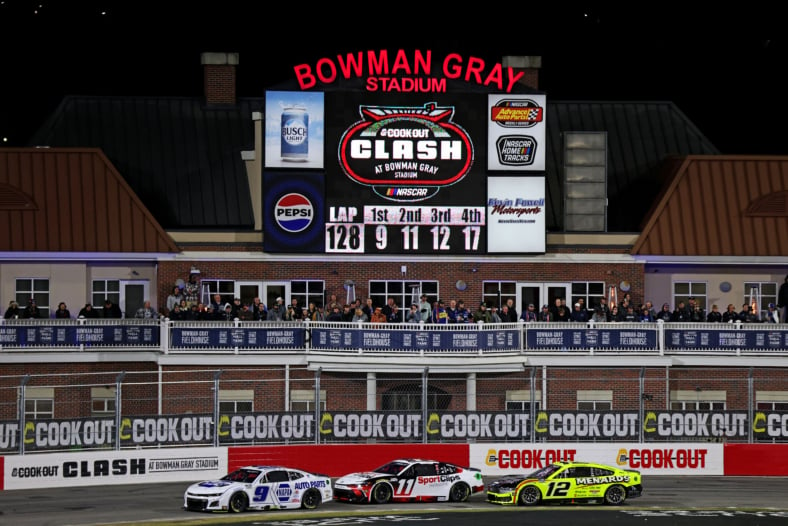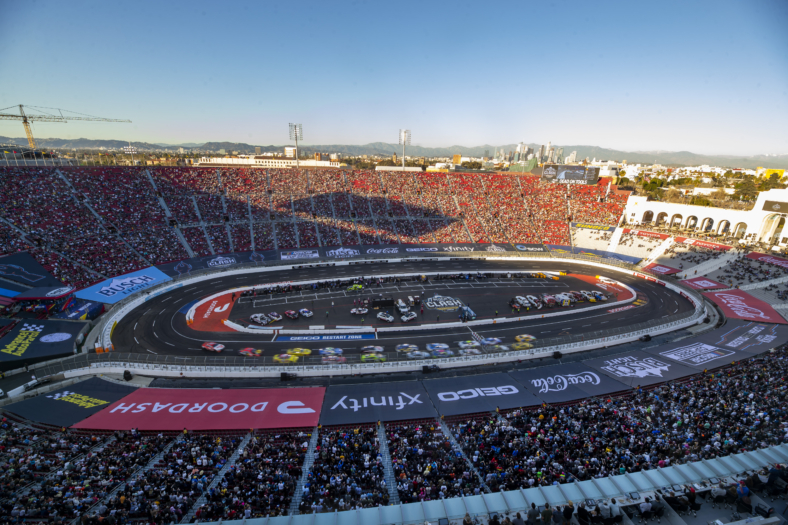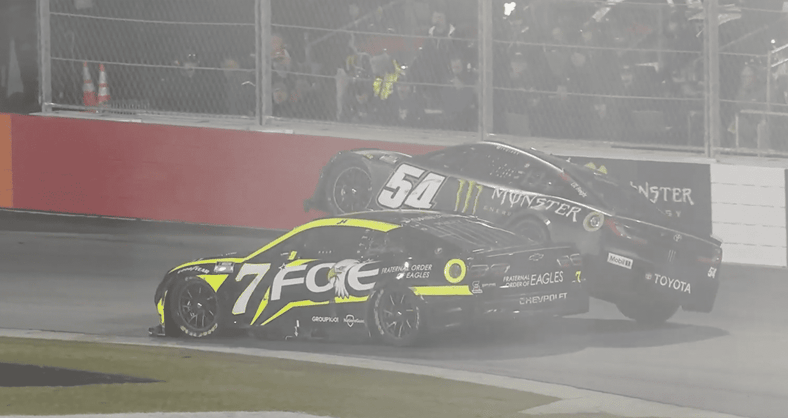
If this was a one-off, and the Cook Out Clash at Bowman Gray kind of felt that way, everyone seems to have left feeling like it produced an additive experience.
Chase Elliott won the race, so he knows he isn’t entirely an objective arbiter but this is what he thought a NASCAR Cup Series race at the place they call ‘The Madhouse’ was supposed to look, sound and feel like.
“It was super fun,” Elliott said. “I’m sure they would have been excited regardless. I’m a little biased in the situation just for myself. It was an extremely special moment. I think the people in the crowd here made it that. I’m thankful for that.
“It was a moment I’ll never forget, for sure. It’s not every day you not only race in an environment like that, but to have the opportunity to win and kind of share that moment with the crowd, it was really cool. I hope we put on a good show. I hope they enjoyed it. Seemed like they were into it throughout the night; seemed like a success.”
The thing is, everyone else felt that way too, even those who didn’t win.
Chris Buescher ran up front in the first half but faded late in the second half but had a blast.
“We knew what we were walking into here, no question about that,” Buescher said. “I’ve experienced Bowman Gray on normal weekend shows. We’ve seen the Madhouse documentary series. We knew what we were walking into and the fans did not disappoint us at all.”
Denny Hamlin was disappointed that a second half lead got away from him but there were big picture things to feel optimistic about as well.
“They took a facility here that’s been around for a long time and made it feel like a brand-new one,” Hamlin said. “The fans obviously were very, very excited to see us. They were enthusiastic. We feed into that. It felt like a big event. Even though it’s not a points paying event or anything like that, it still feels big.
“You want to go wherever can give you that feel and atmosphere. There’s surely bigger venues and bigger cities to go to, but will you have this type of feel or not? That’s really what matters.”

Bowman Gray Stadium is known for its rabid fan base, who are effectively right on top of the competitors as they turn laps due to its tight quarter-mile configuration and football bowl stadium seating structure. Capacity is somewhere less than 20,000 but the venue was sold out and they were both rowdy and enthusiastic.
Elliott said it cemented his years-old assertion that less is sometimes more in NASCAR.
“Like this crowd, it wasn’t 80,000 (to) 90,000-person crowd but it was a smaller number, a more intimate number,” Elliott said. “To your point, they were all very much into the show. I think it makes for good TV. It looks good. They were into it. I think all those things are positives for us as an industry.”
A sizeable percentage of the crowd spent the weekend booing Bubba Wallace endlessly; giving him the middle finger. He jabbed back on social media but thought the event came across well.
“I did,” Wallace said. “I thought NASCAR did a good job of making a show, which is exactly what they wanted for all this. I think the pre-race stuff was really fun. I thought the fans were engaged. It was good. It was good from start to finish.”
Ditto the equally unpopular three-time champion, Joey Logano.
“I thought the pre-race ceremony was pretty cool,” Logano said. “The fans being right there, it’s what Bowman Gray is, right? You have the fans heckling you, saying whatever they want, saying you’re No. 1 in two different ways. That’s what Bowman Gray was built off of. I don’t know if you guys got the boos I got.
“Overall I would say it was successful, right? When fans are cheering and screaming, the drivers’ brands are being exposed to everybody, which is great, right? Everyone has a favorite or not. You’re passionate about it. When you get everyone this close, you look at yesterday, people hung out for the modified race all the way until the practice through the heat races. It was packed yesterday. Tonight was standing room only.
“From that standpoint, the atmosphere was successful.”
It was also really convenient, says Wallace.
“The best thing about it is most of us in the room got a 45-minute drive back home,” Wallace said. “Not having to stay in L.A., fly six hours. All in all it was a good weekend.”
And that’s just it.

It’s an open secret that NASCAR wants to take the Clash to international markets in the years to come. Before the decision was made to take a Cup Series and Xfinity Series weekend to Autódromo Hermanos Rodríguez in Mexico City, NASCAR contemplated moving the Clash from Los Angeles to an arena south of the border.
Now there are rumors about Brazil.
“We’re going to go wherever they tell us to go and we’re going to like it,” Hamlin said dryly.
Regardless of what the future holds, this moment in time was seemingly successful in everything it set out to accomplish.

Ty Gibbs launched himself into the air while retaliating against Justin Haley for an incident between them during the Last Chance Race. Josh Berry aggressively shoved his way into the main event. Ryan Preece told him ‘that was badass,’ despite probably roughing some feathers along the way.
Preece himself drew the ire of John Hunter Nemechek the night before. Cole Custer told AJ Allendinger that he gets a free pass for their heat race incident but they were going to have problems if it happened again.
This is the Madhouse!
Ben Kennedy, the executive vice president and chief venue/racing innovations officer for NASCAR, wanted to bring the Cup Series back to one of its original homes and one promoted by his great-grandfather, league founder Bill France Sr.
In doing so, it revitalized the venue in a way that will be enjoyable for decades to come by its weekly local racing competitors every summer. The high-stake heat races and last chance race notwithstanding, the racing product was generally more professional than its predecessor at the Los Angeles Memorial Coliseum.
Elliott expressed that pretty succinctly.
“Yeah, I just feel like if we’re going to race on a football field, this is probably as good of a place as any to do it,” he said.
Why?
“I think just the size of the track,” Elliott said. “It just seemed bigger to me. I don’t know what the technical distance would be, how different it is or not. The straightaways seemed a little longer, the corners weren’t so sharp. Didn’t seem like it was such a sharp apex.
“I think all of those things, that combined with the track surface having some age to it, all three of those things probably had a pretty large impact on the race being better and kind of putting it a little more in your hands as far as tire management and all that stuff.”
Buescher said, unlike the LA Coliseum, that this was a legitimate short track.
“This one races like a racetrack,” Buescher said. “I don’t know if it was just the curved straightaways or what and I’m biased, but I like this place. This was fun racing. It was a little rough at times but it was fun racing. This was so much better.”
So now, the hope is that wherever the Clash goes to next, that the atmosphere and racing will continue to be just as memorable.
Matt Weaver is a Motorsports Insider for Sportsnaut. Follow him on Twitter.



